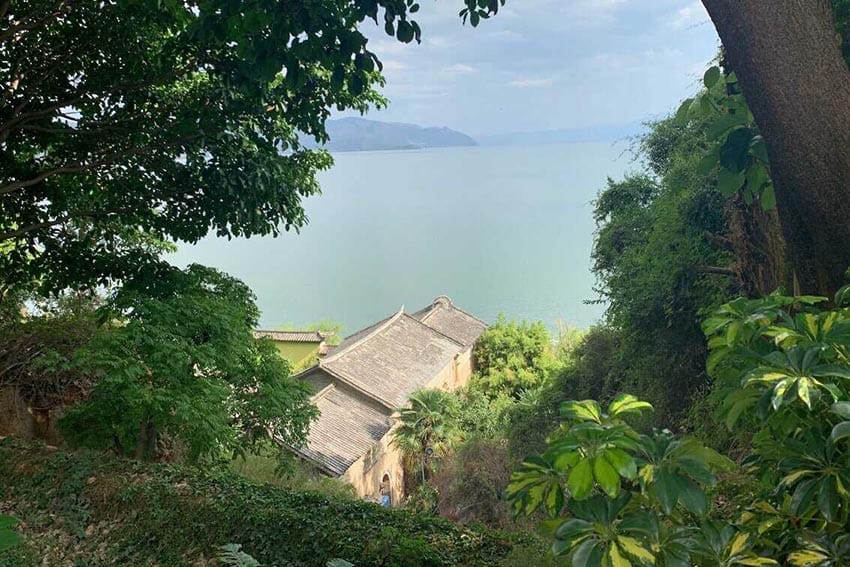
How an Ancient Fishing Town in Dali, China Provided a Much-Needed Romantic Retreat
By Kirsten Harrington
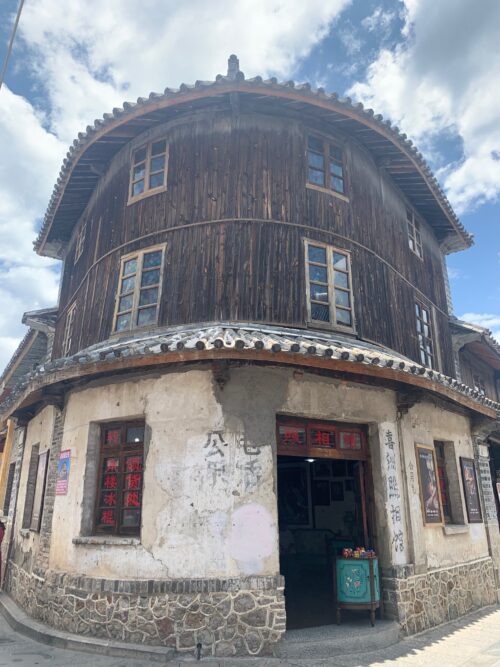
It was June 2021 and my husband and I desperately needed a weekend getaway. The “oh, yes, this is why I married you” kind of a getaway.
Living in Beijing during the pandemic combined with long hours at his work were causing all kinds of tension.
Online school, apartment lockdowns, travel restrictions and one emergency surgery in a Chinese hospital had sent our collective stress meter into the red zone.
A friend suggested that we book a weekend escape to Dali. A peaceful lake setting, subtropical climate and relaxed vibe would do us both good he promised.
I followed his advice and booked two tickets on Air China for the 4-hour flight to the Chinese province of Yunnan.
Erhai Lake
Just stepping out of the airport was enough to make me relax. Absent were the airport security guards and health screenings ever-present in Beijing.
Instead, we were greeted by a warm, tropical breeze, blue skies, and a driver I had arranged to take us to our hotel.
Erhai Lake, one of the largest freshwater lakes in China, is surrounded by the snow peaked Cangshan mountains and anchors the region.
As we drove toward our hotel, magenta bougainvillea framed the lake with its rippling waves.
The tropical climate and abundance of flowering plants on the hillside made me feel as if I’d landed in the South of France, not southwestern China.
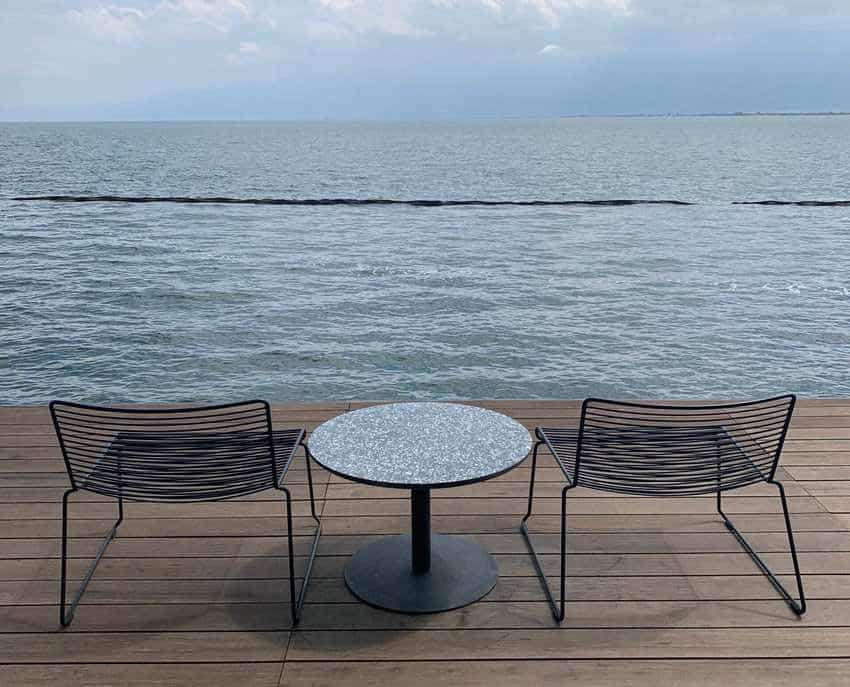
Our destination was the town of Shuanglang, about a 40-minute drive north of Dali. This small village had been used for fishing by the Bai minority people for over one thousand years and was gaining popularity as one of the most relaxing and picturesque spots on the lake.

The scenery in the region is a draw to young Chinese couples who love to take photos of their romantic escape from big city life.
The roadside was dotted with pink and baby blue sports cars and convertibles, which were popular rentals because they added a burst of color to social media photos.
Room with a View
Our home for the weekend, Yakamoz Resort, was perched on the lake, down a maze of pedestrian-only cobblestone alleys that make up the town.
The bellman came to meet us at the entrance of the village, deftly maneuvering his cart through alleys so narrow I sucked in my breath.
We were welcomed with leather slippers and given a key to a cabinet to store our street shoes.
The hotel’s interior of slate, wood and leather was understated elegance, allowing the true star to shine: Erhai Lake.
The lobby’s sliding glass doors opened to the deck, creating an expansive open-air lounge.
In our room, floor to ceiling windows invited the colors of the sky, lake and mountains in. The soaking tub seemed to hover over the horizon, giving the illusion of bathing in the lake. It was the perfect romantic retreat space that we needed.
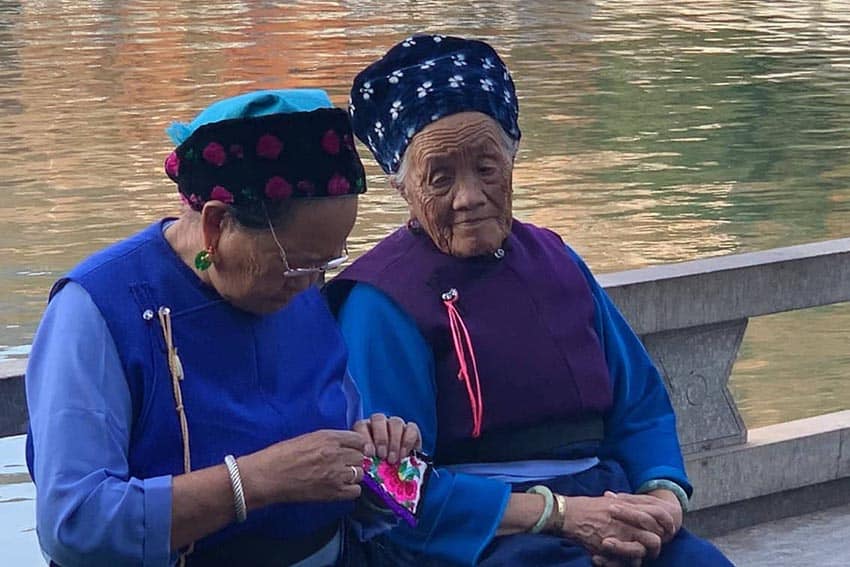
Shuanglang Fishing Village Near Dali
We stashed our bags and reluctantly left our room; hunger was calling. Nearby Dim Sum Garden offered waterside dining nestled among flowering trees. Cold beer and a fresh shrimp salad got the weekend off to a great start.
After lunch we wandered the narrow lantern-lined alleys, winding our way past small cafés and guest houses decorated with trailing vines, banana trees and geranium-filled planters.

A rose garden sits in front of one hotel, waiting to be harvested for Yunnan’s famous flower cakes, a perfumy, flaky pastry made from fresh rose petals.
I breathed in the fragrant air and reached for my husband’s hand. The only noise was the occasional honk from a passing electric cart.
In the past 10 or 15 years, guesthouses have sprung up in traditional Bai architectural style. White and black buildings with intricate tile roofs are painted with scenes inspired by this mariner heritage.
Bai women go about their daily lives wearing traditional dress, often ornately hand-embroidered tops and head wraps.
Dali Shopping
We walked past stores selling blue batik tablecloths and bedspreads, dyed from indigo plants that grow in Southern China.
Woven baskets of all shapes and sizes make popular souvenirs, and many shops sell smoky-flavored pu’er tea.
We bought some Yunnan coffee, a rare find in Beijing, and wandered in and out of shops selling handmade leather shoes and handbags.
Trendy design shops and centuries-old-handcraft stores create a blend of old and new.
The little alleys eventual converge near the lake, and the town square provides a gathering place for kids to play after school basketball and women to sit and embroider.
Shops selling ice cream and other treats surround the square. There were no police, security cameras or propaganda banners that define pandemic life in Beijing.
We relaxed into the local lifestyle, almost forgetting we were in China.
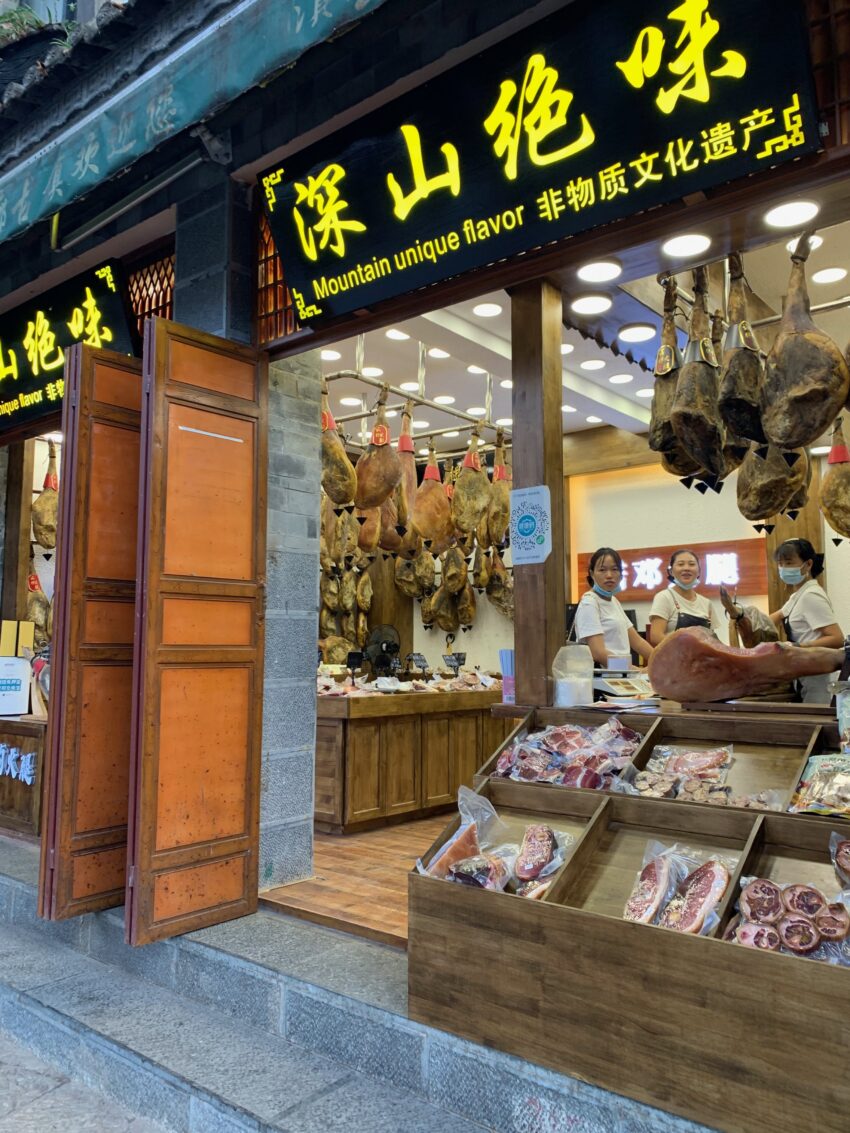
Tea and Happy Hour
After a few hours of exploring, we went back to the hotel for High Tea on the deck, and teatime turned into happy hour.
In many places in China, it’s not common to order wine by the glass. After putting my Mandarin skills to the test, I was able to order a bottle of French Chardonnay with permission to store it in the hotel kitchen if we didn’t finish it.
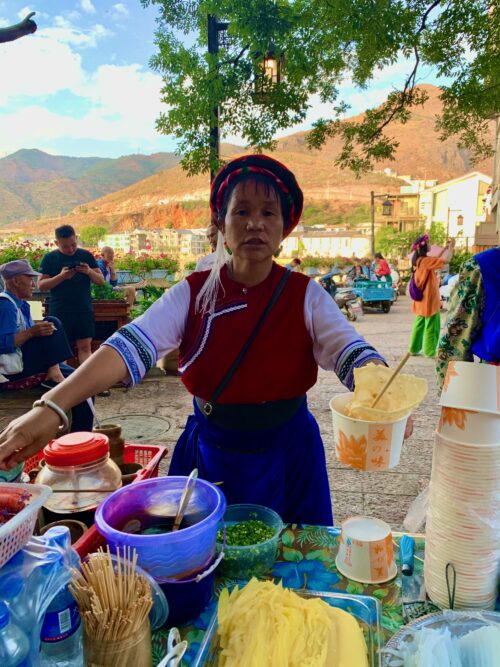
With a glass of wine in hand and no agenda, our most important decision was whether we should sit inside or outside to enjoy the views.
As promised, my husband turned off his work phone and we had time to remember why we liked each other in the first place.
Local Flavor
Wandering the alleys of Shuanglang provided plenty of opportunities to try the local snacks, like the smoked ham hanging in the alley stores.
Shopkeepers beckoned us in, offering samples of the tender salty meat made from local black-haired hogs. Yunnan ham is popular in stir fry dishes, soups or just as a snack.
Vendors offering Dairy Milk Fans seemed to be on each corner. Milk is boiled, rolled into paper-thin sheets with a bamboo rod and then dried.
The milky sheets are folded into fan shapes and fried into crispy crackers, topped with sweet or savory sauces. The same vendors sold grilled meat skewers and sausages.
Fruit vendors sell dragon fruit, prickly melons and bright orange plums soaked in sugar.
Even though we had snacked our way through Shuanglang, we still wanted to sit down for dinner. It’s hard to choose a restaurant when you can’t read the menu, so when the chef at small fish restaurant waved us in, we went.
Ordering went smoothly, since we got to choose a fish from the tank and point to vegetables in the glass door fridge.

I had learned enough Chinese to ask for cold beer, and soon a feast of steamed fish and stir-fried okra, garlic eggplant and green beans with pepper arrived at our table.
Joyride
While I knew we would never blend in, I wanted to be like the young in-love Chinese couples we saw when we arrived, zipping around the lake in brightly colored convertibles and stopping to capture it all on camera.
So, after breakfast al fresco (beef noodle soup, a fried egg and bacon), we walked into town to rent a “love bug.”
While technically we weren’t supposed to rent a car without a Chinese driver’s license, the car rental people were eager to take $30 for the day after taking my husband on a quick test drive.
I put on my sunhat and hopped in the robin’s egg blue BMW convertible. It was exciting to hit the road – we hadn’t driven a car since arriving in China two years ago.
We were heading to Xizhou Ancient Town, the most well-preserved Bai minority settlement in Yunnan. Couples out for a joyride stopped at the “selfie parks” along the way.
Ranging from platforms in flower fields to hanging swings and emus, these parks charged an admission for camera-happy tourists to have a photo shoot.
Some people even hire a photographer. We skipped the selfie scene and stopped instead at little parks and green spaces where we strolled by the lake. I’ll confess we did snap a selfie or two along the way.
Xizhou Ancient Town
Women in colorful Bai costumes and rubber boots planted seedlings in rice paddies that bordered the town. We drew a small crowd as we parked the car; we hadn’t seen another laowai (foreigner) the entire weekend and pulling up in a sports car created a stir.
The town, sandwiched between Erhai lake and the Cangshan mountains, served as an important trading center along the Tea Horse Road during the Qing dynasty (1644-1911).
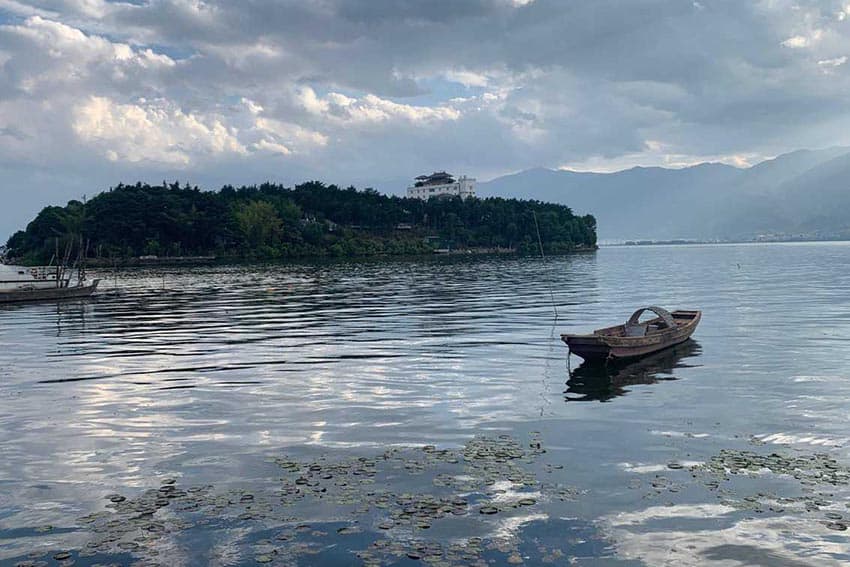
Xizhou is an open-air museum of sorts, containing hundreds of Bai-style buildings from different time periods. We strolled under archways and down narrow lanes, admiring the elaborate drawings on some of the predominately white and black buildings.

Startled by firecrackers, we turned to witness a funeral procession passing by with mourners chanting and playing music.
The Linden Centre, a historic boutique hotel, sits just on the outskirts of town and the rooftop patio offered sweeping views over the rice fields and endless sky.
After lunch at the hotel, it was time to retrieve our baby blue “love bug” and head back to Shuanglang.
Ferry to Nanzhou Folk Island
We safely returning the car, and I breathed a sigh of relief that we didn’t end up in a Chinese jail. (But it would have made a great story.)
We decided to explore one of the islands that dotted the lake. The ferry to Nanzhou Island left from the promenade next to the main square, and five minutes later deposited us at the island.
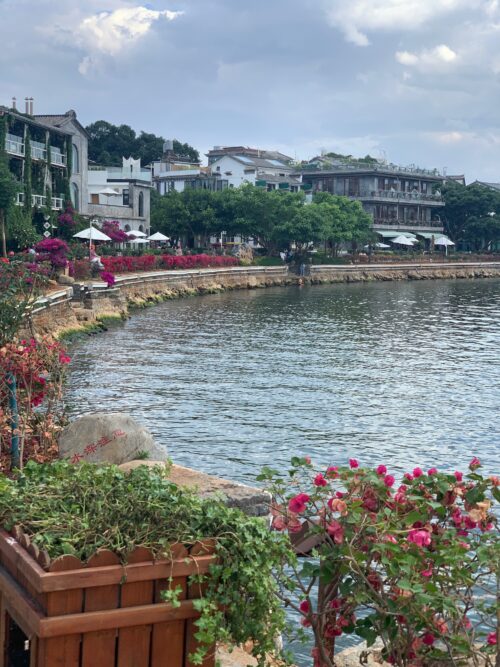
Developed as a tourist attraction, there’s a small manmade beach, a palatial hotel and a few statues. But the views from the top of the island were the highlight.
We strolled along the pathway around the island, taking in the views and stopping to rest on stone carved benches in the bamboo forest.
We made it back in time to finish the last of our wine on the deck before heading next door to Dim Sum Garden again. We ate our wild Yunnan mushroom pizza while the colors in the sky turned from orange to gray. Th
at night, we slept with the windows open, listening to the sounds of the waves.
Back to Beijing
We had enough time the next day to savor the early morning view with coffee and breakfast on the deck.
As we boarded the flight to Beijing, I thought about how thankful I was to experience such a beautiful place and make some great memories of China with my best friend at my side.
It was just what we needed.

Kristen Harrington has been a freelance food and travel writer for over 12 years, chronicling adventures in China
and the US. Her work has appeared in WhereTraveler, The Seattle Times, Edible Orlando, The Spokesman-Review, The Beijinger and numerous other publications.
- Saudi Arabia Might Be Your Next Getaway Spot - April 23, 2024
- Mongolia, the Land of Eternal Blue Sky - April 20, 2024
- These 9 U.S. National Parks Require Reservations in 2024 - April 17, 2024



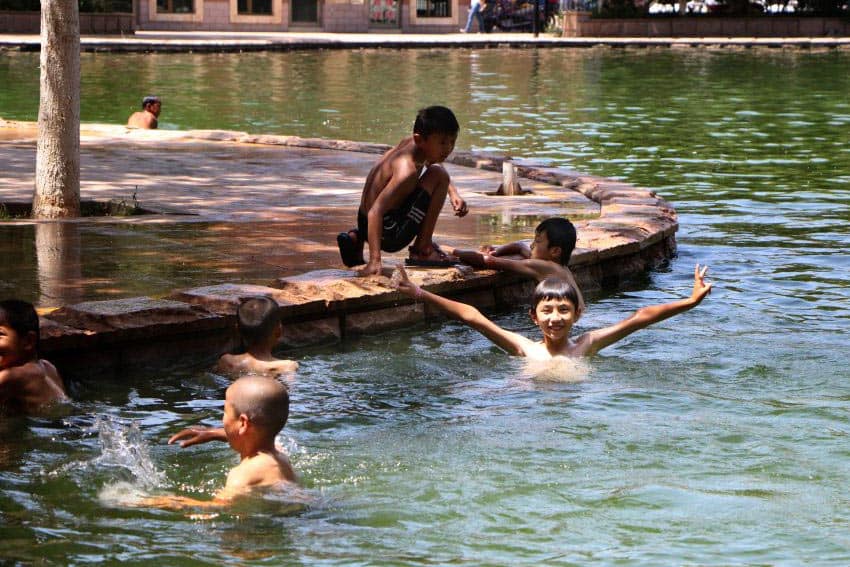
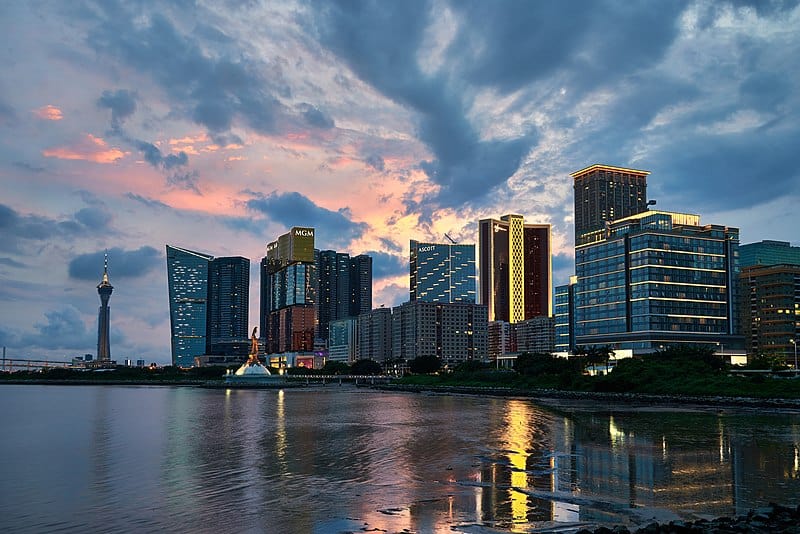

What a wonderful article on Dali. Even though I didn’t go there I was in Lijiang (same general area) some 10 or so years ago. This article brought back some great experiences. We took the train from Kunming, a very long ride, and what I remember about that is the extraordinary number of tunnels that we went through. The Chinese don’t seem to go around mountains as we might in Canada; they just blast their way through the middle! However, Lijiang was amazing for the same reasons that the author loved the sojourn to Dali. From there we went to Shangrila, also known as Zhongdian which also has a fascinating history. I loved my experiences in China, not the least of which was teaching English to delightful students and meeting the people.